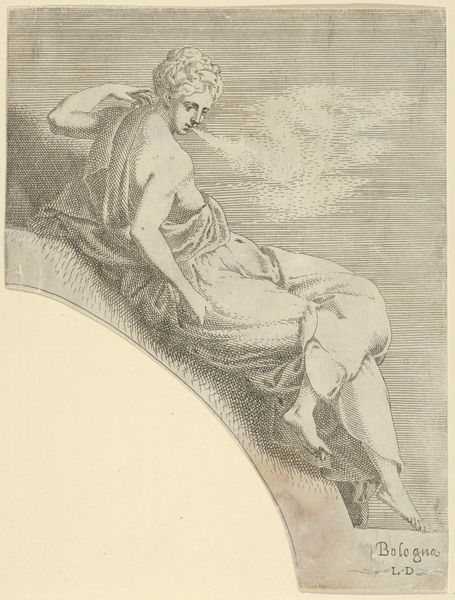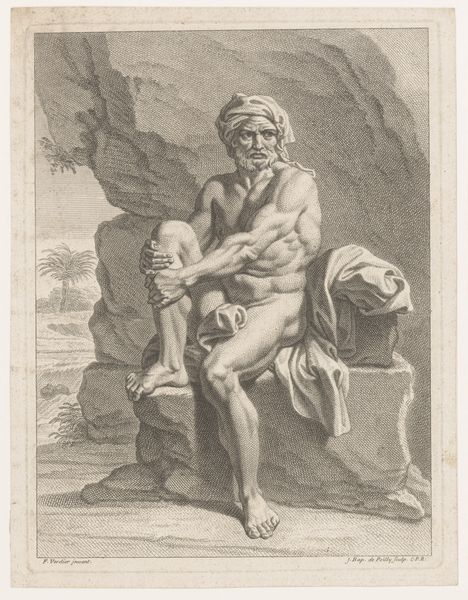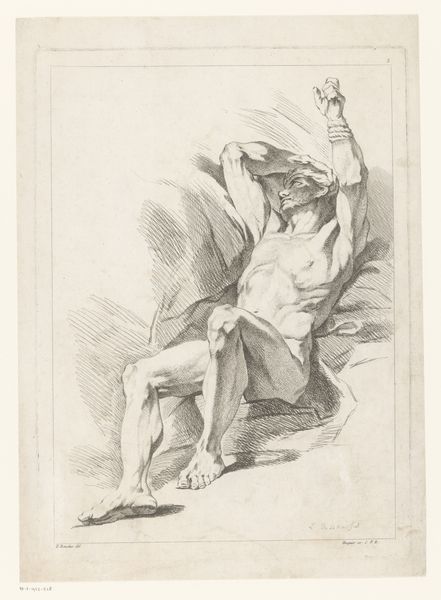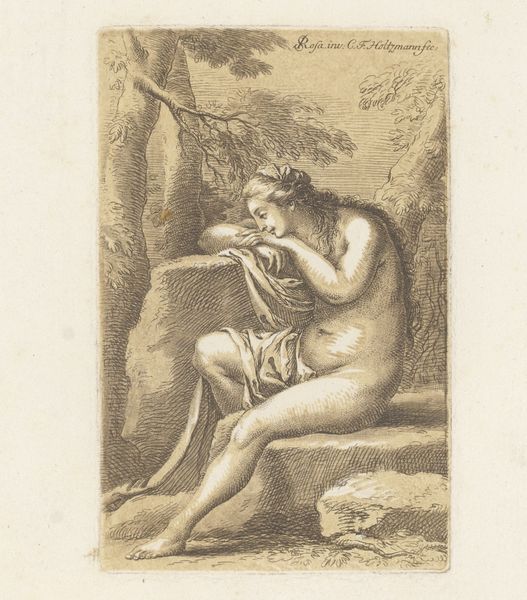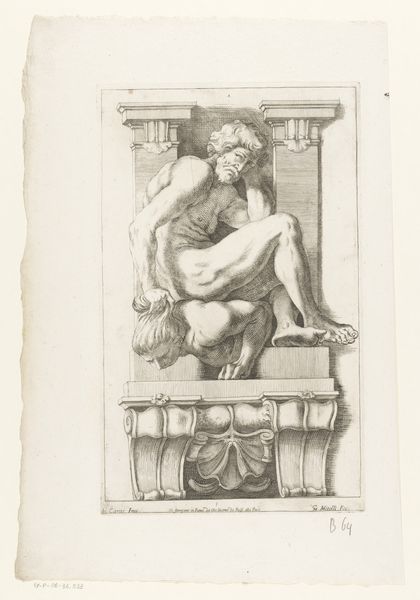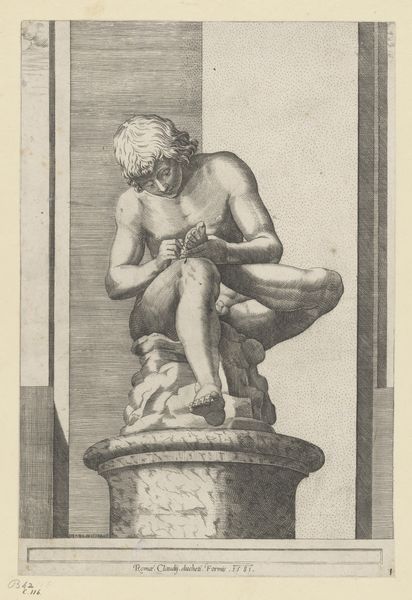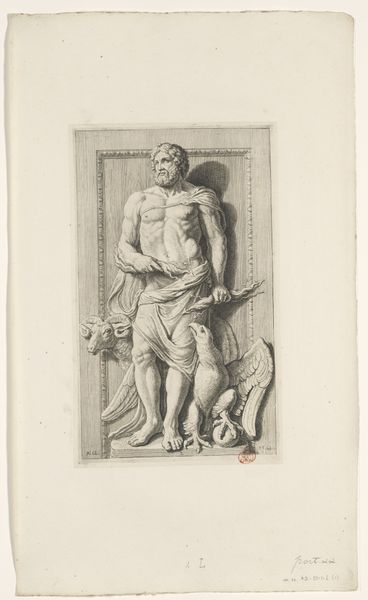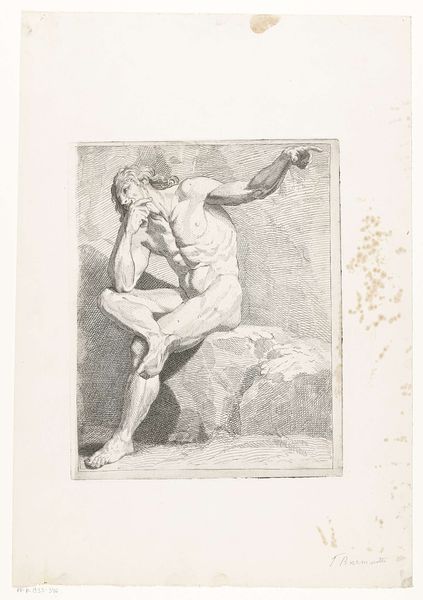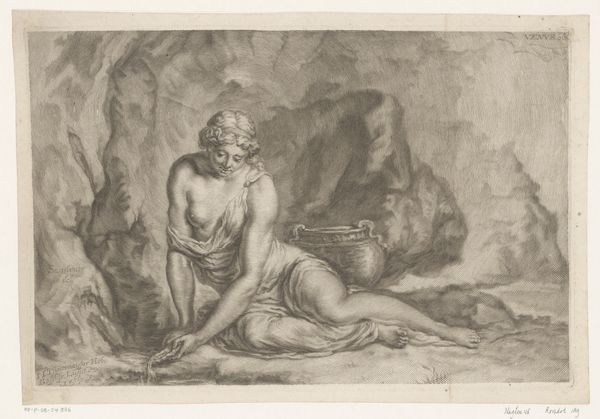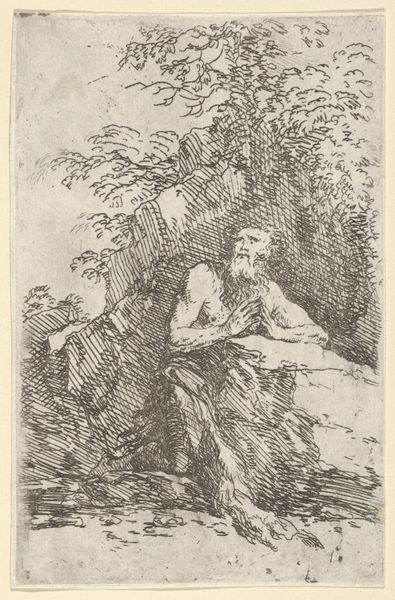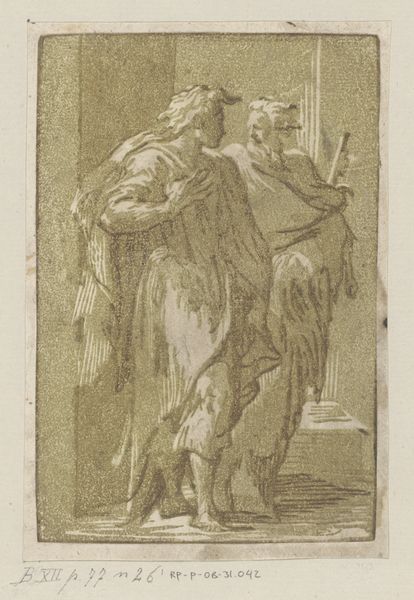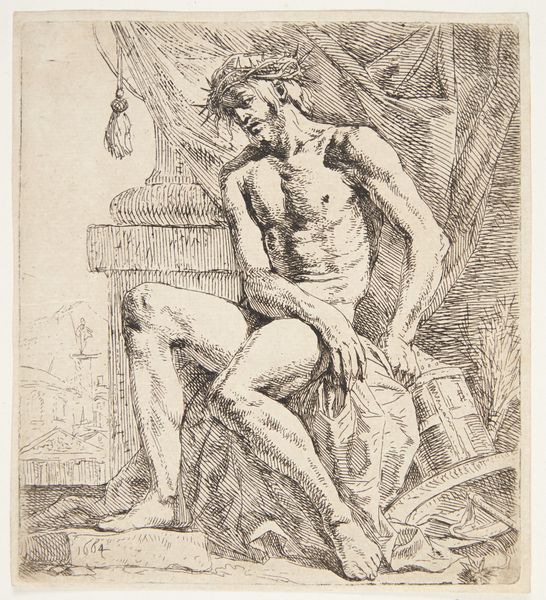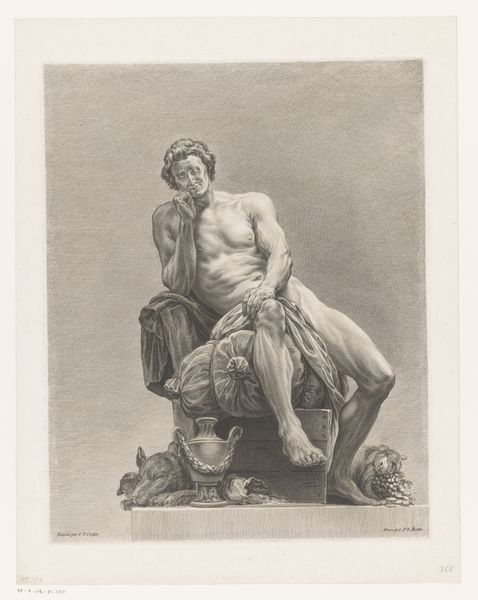
drawing, print, etching
#
drawing
#
baroque
# print
#
etching
#
nude
Dimensions: height 185 mm, width 120 mm
Copyright: Rijks Museum: Open Domain
Curator: Here we have Johann Elias Ridinger’s 1728 etching, “Zittende krijgsman met ontblote borst,” which translates to “Seated Warrior with Bared Chest.” It’s part of the Rijksmuseum’s collection. Editor: The first thing that strikes me is the line work—it's so delicate, yet creates such a muscular figure. He looks utterly defeated. Curator: Ridinger was known for his animal studies, particularly horses, but he also produced many allegorical and historical prints. This piece showcases the Baroque era's fascination with classical antiquity and the male nude. He has a laurel wreath so it looks like he has divine status or kingship. Editor: I'm curious about the physical process of creating this image. You can almost feel the pressure of the etching tool as it bit into the metal plate. How would the labor of this print compare with a commissioned portrait from the period? The intended audience certainly differs. Curator: Good question. The print medium makes the artwork more widely available than, say, a unique painting. Its accessibility allowed for the spread of certain ideas, or ideals like in this print. The mass production through printmaking democratized the image, shaping public taste and disseminating propaganda. Editor: The social context shapes my view of the work. To our eyes, this seems like an idealized or possibly homoerotic nude, but maybe this man stands for loss and lament—like some biblical character brought low through hardship. Curator: Absolutely. Prints such as this, during the rise of academies, allowed for the transmission of artistic ideas and for artistic training, especially with the study of anatomy. The work speaks of history painting and moral lessons—valor lost, perhaps? Editor: Right. Thinking about the etching process and the warrior’s bare chest, the making of this print isn’t too dissimilar from how that man may have once dressed or armed for war: through successive layers and a lot of physical, demanding, hand-to-object work. Curator: What a compelling observation! Viewing it this way makes you realize that while Ridinger depicted a warrior, his work participates in the culture that idolizes militarism, even after conflict has destroyed it. Editor: It really opens up what we're seeing—an intricate network of manual labor, the printing press, classicizing, artistic styles, and public reception all coalesce. It’s more than meets the eye at first glance.
Comments
No comments
Be the first to comment and join the conversation on the ultimate creative platform.
